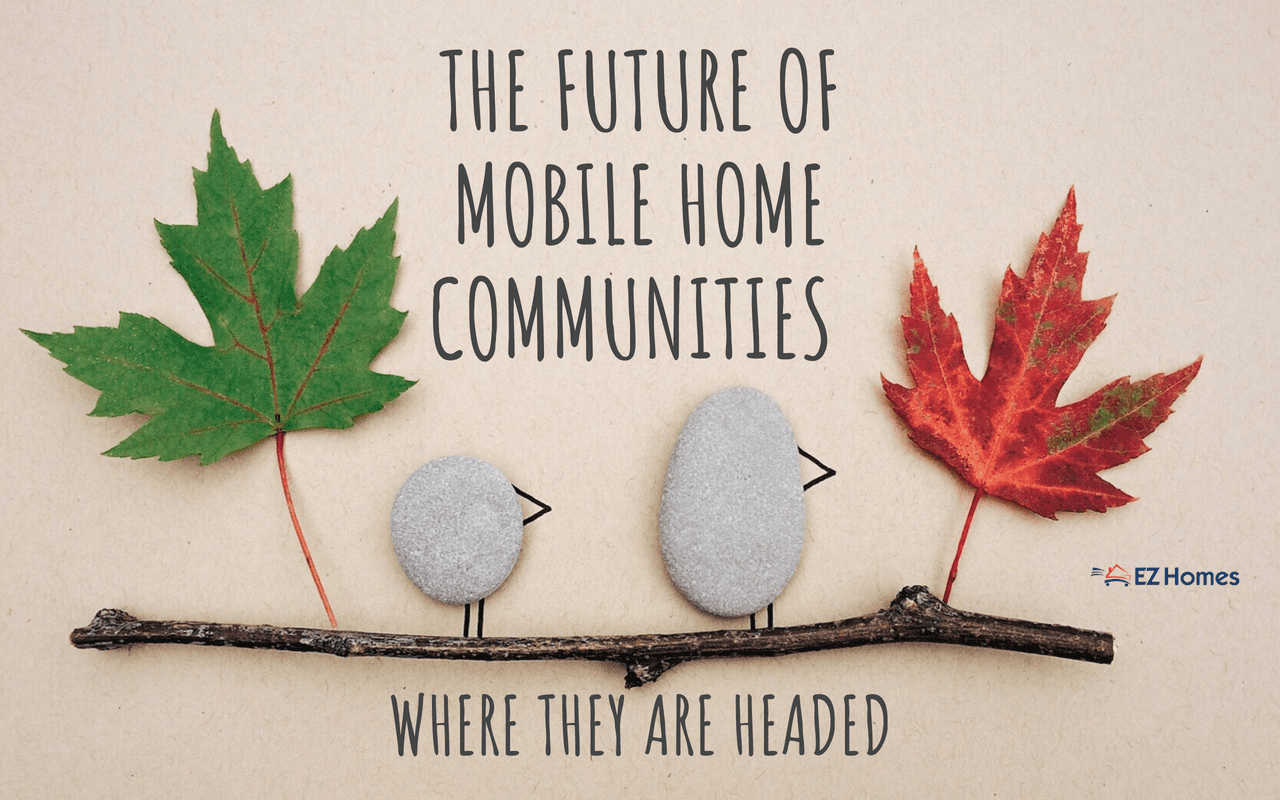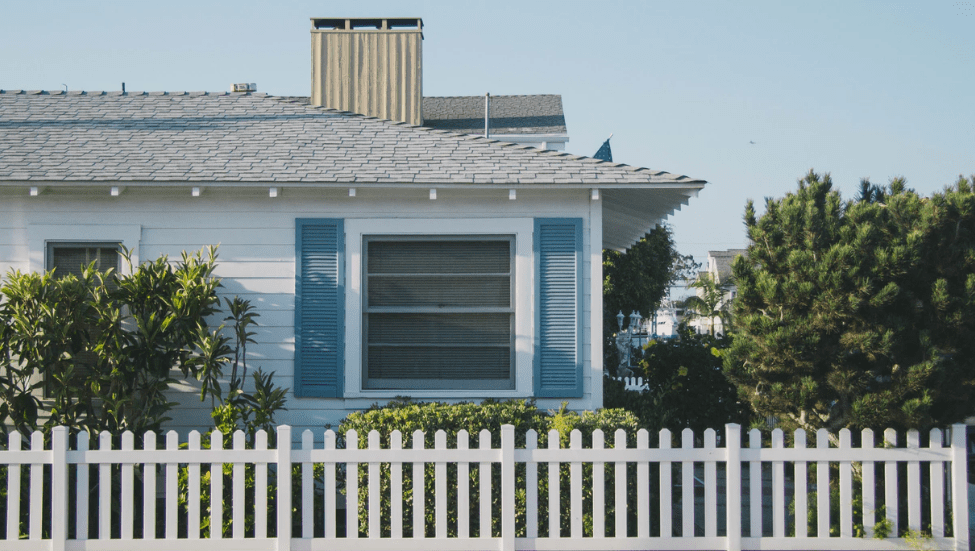With mobile home communities entering more mainstream conversations related to accommodation, you might be hearing more and more about them. Perhaps you’re already surprised to find out that they are much more relevant, available, and diverse than you ever thought.
However, you might still be curious to know what these communities have in store with regards to the future. Do they even have one? Are they just a passing fad, a response to a need that has been filled and has no further applications?

We are glad to say, that almost all indicators point to the fact that manufactured homes are here to stay. For good. As such, you should take the time to find out more about where they came from, where they are now, and where they are headed. That’s what this article is here to show you.
Where did they come from?
We’ll start in the late 1920’s when the builders built the first ‘trailer coaches.’ Drivers transported these trailers by hooking them behind cars. They were most often used as movable vacation homes. Trailer coaches were never expected to permanently stay rooted in one spot, although they might occupy the same lot for quite some time. Then, when the 2nd World War ended, there was a sudden, huge need to provide veterans with affordable and decent accommodation.
Mobile homes evolved from trailer coaches in answer to this need, providing something a little more permanent and a little more like a traditional home. It’s with these homes that mobile home parks started to come into play.
Over the years, demand for mobile homes continued to grow which also meant a demand for land to put them on. It wasn’t long before parks similar to the land-lease communities we know today became commonplace. These parks either provided empty lots on which residents could place their own home and keep leasing the land or lots with units where residents could rent both.
What has happened over the years?
Since then, mobile home parks have been slower to evolve than the homes they are meant for. They are largely the same as the parks of yesteryear that housed park model RVs or trailer homes. It’s mostly the homes on them, and the inhabitants themselves, that have changed over the years.
In 1976, the U.S. Congress passed the National Manufactured Housing Construction and Safety Act (42 U.S.C.). This brought federal regulations into the industry that drastically improved the manufacturing processes, construction standards, and materials used to make mobile homes. This had the effect of making mobile homes provide better, safer living standards, last longer, and breakthrough their generic molds by spurring on innovation.
In 1980, they also changed the official term used for ‘mobile homes’ to ‘manufactured homes.’ Manufactured homes of varying prices, sizes, luxury features, floor plans, and designs are easily accessible today.
Will there be more or less of them?
This is a question no one seems to have the answer to. That’s primarily because mobile home parks are in a very interesting and unusual position. At the moment, mobile home park investment presents a golden opportunity to create a solid passive income, with a speedy and high ROI, consistent cash flow, and a demand that looks like it’s only going to grow for the foreseeable future. We’ll talk more about this in the next section.
However, at the same time, many cities are unwilling to zone more land to build mobile home parks. Combine this with the fact that many mobile home parks are located on prime pieces of land which are being bought by developers for huge developments like apartment blocks, malls, and office buildings, and it seems like the number of parks might actually be shrinking.
Some of the supporting facts

From an economic perspective, this is something of an exception as supply usually grows to meet the demand. Mobile homes park numbers aren’t stagnating because of their performance or a lack of demand, but because of other external factors.
According to research done by the Manufactured Home Institute, there are currently around 40,000 manufactured home land-lease communities spread throughout the U.S. Of the total number of manufactured homes, over a third (34%), are located within these parks. Clearly, even if their numbers keep steadily declining (which we’re not sure is the case), mobile home parks aren’t totally disappearing any time soon.
It will also be interesting to see whether those in power become more open to the idea of approving new parks as the housing industry comes under increased pressure as a result of the lack of affordable housing.
For some of the 40 million Americans who exceed the government-recommended 30% gross income expenditure on housing, manufactured homes present their only shot at the American dream.
How long does a mobile home park last?
Because mobile homes themselves don’t have an “indefinite” lifespan, at least not for now, you’re justified in wondering if the same goes for the parks. Older mobile homes of the late 70’s to late 80’s typically had a shelf life of about 25-30 years. However, there are still some lucky ones standing today that have been well looked after.
Today’s manufactured homes last much longer. Obviously, not enough time has passed to observe how long newer models can actually last. However, new models are often guaranteed by their manufacturers for anywhere between 25-50 years. And, there is no reason not to expect well-cared for homes to last much longer than that when you look at how much standards have improved and how much innovation there is at the moment.
But, what about older mobile home parks? Because of our own stubborn perceptions and some media bias, we still have a mental picture of mobile home parks as outdated, rundown, and filled with dilapidated units. This, however, is no longer the norm.
You’d be surprised!
Mobile home parks are increasingly catering to a larger market as well as targeting specific markets. Nowadays, you get everything from low-income to middle-class to upscale parks, and everything in between. There are even mobile home parks made for age 55+ residents only or for convicted sex offenders who can’t get housing elsewhere.
That also means you get parks with older or newer mobile home models. Most decent mobile home parks today even impose an age restriction on the units they allow to be placed inside the park. For most, it’s homes built after 1980 when some of the last major updates to the HUD Code were made, and it would be very difficult to find a park that accepts a pre-1976 home.

Although it’s hard to get rid of mobile homes that have fallen into an unusable state, it’s not impossible. Most parks will get rid of these models and replace them with newer and more attractive units – that they can also sell/rent for a higher price, of course.
Are they a good investment?
The terms “mobile home parks” and “sound investment” still doesn’t sound like they belong together in the same sentence. However, for savvy investors, they provide just about one of the best property investments you can make right now. In fact, even Warren Buffett has a prominent stake in the industry.
There are a number of reasons why mobile home parks seem like such a great investment opportunity:
- Mobile homes of today last much longer- built to higher standards and are much safer. This means your physical assets are more secure than they used to be.
- Currently, developers build very few, if any, new parks, meaning competition won’t explode for the foreseeable future.
- Because of much lower maintenance and operating costs, these parks generally have much higher ROIs than real estate developments.
- The residents are unlikely to move as they can’t afford anything other than manufactured homes in the current market.
- There are plenty of mom-and-pop parks on the market sold cheaply, flipped, and run at a much higher profit.
- Property prices in the U.S. are soaring year-on-year. So, if nothing else, you’d most likely be able to sell the land for a huge profit in the future.
- And, lastly, they have a much lower barrier of entry in general than a real estate development.
It’s not all good news, though. There are also a few unique challenges related to the mobile home industry. For example, it will be near-impossible to secure traditional means of financing to buy a park, and you might need to resort to “hard cash” or something equally difficult. Also, no matter how we dress it up, mobile homes are still much less “permanent” than stick-built homes.
If you want to know more, be sure to read our article: What’s the Big Deal About Mobile Home Investing?
Where do WE think mobile home communities are headed?
So, you want to know our opinion? Ok, here we go.
It doesn’t seem that anyone has an answer to the current affordable housing crisis. The average apartment rent of $1,200 or the $190,000 cost of a home usually takes up more than 30% of the average American’s income – the suggested percentage for affordability. The number of those who aren’t earning enough to afford housing will only continue to grow. They will either need to resort to cramped inner-city apartments or take a serious hit to their spending power.
Manufactured homes, rented or bought for almost half of that, offer the best value for money. Only modular homes can hope to compete in regards to providing a family home, a small piece of property, a community atmosphere, and a pleasant location that’s more affordable than traditional housing. However, even modular homes are usually more expensive.
Putting these observations together
Precisely for these attributes, mobile home parks should also continue to grow in popularity among aging members of society or those approaching retirement. Research also suggests fewer and fewer Americans are hitting their retirement savings target, leaving them in need of affordable options. These people also usually value the benefits of living in something like a mobile home park community. For that reason, age 55+ and 60+ mobile home communities will see even more interest and popularity in the near future.
The same goes for young families. With lower gross-incomes, the need for extra space for kids, and the desirability of raising kids in a community like this, more and more parks will cater for this market.
In the meantime, mobile homes themselves will continue to improve. Their prices will increase, but not as much as real estate. If perceptions also start to change, this might even see the creation of more and more parks close to cities.

As a disclaimer, it’s inherently difficult to judge the short-and long-term direction of any industry that’s so relatively young and that’s still changing and evolving all the time. However, we wouldn’t be in this business if we didn’t see something in it or thought it had a future. So, naturally, we’re optimistic.
As far as we can tell, there is a bright future for mobile home parks – not the dreary and lifeless images we see in our minds or on TV. So, whether you want to live in one, own one or invest in one – there is no reason why you shouldn’t explore it further and see whether mobile home living is for you.
Do your research. Is this something for you?
If you are reading this with an eye on getting involved in the mobile home park business, either through owning and managing your own park or by investing in the mobile home park industry, we have a number of articles on our blog to help you out. Keep an eye out for even more advice, tips, and insights in the near future.
As always, don’t just take our word for it, go online and look for any mobile home communities near you. Take a drive and see what’s out there. The difference between your expectations and reality may surprise you.


